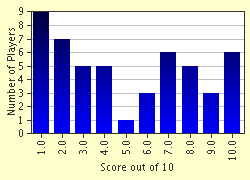Quiz Answer Key and Fun Facts
1. Which Roman era philosopher wrote the fascinating work of pseudo-science called 'On
the Nature of Things'?
2. Which fellow provided the distinction amongst the 'liberal arts' that became the standard
for the curriculum of the Middle Ages?
3. One Roman scientist and historian was killed while making investigations in nature, who
was he?
4. Which historian of the Roman era provided the ancient world with the first accurate
descriptions of Italian and Spanish geography?
5. A certain Greek geographer, who lived from 63 B.C. to 24 AD, is considered the greatest
of the Roman era, with his culminating work being the 'Geography'. Who was this
well-traveled fellow?
6. Who wrote the earliest known treatise on medicine using the Latin language?
7. Which ancient Roman writer on architecture of the 1st century B.C. included much on
the orientation and position of drainage systems of buildings in his 10-volume
compendium called 'De architectura'?
8. The Julian calendar, containing leap years and 365 days, was the work of Julius Caesar
and a number of his advisers. Which Alexandrian mathematician was his chief advisor
on the calendar?
9. Perhaps the last gasp of the Alexandrian legacy in Roman science and philosophy came
via the 'Neo-Platonism' that flourished from the early-3rd century until the early 5th
century AD Who is considered the most influential early exponent of this new
philosophical system?
10. Which late Roman philosopher divided mathematics into four categories, namely:
arithmetic, music, geometry and astronomy, which he later named the 'quadrivium'?
Source: Author
thejazzkickazz
This quiz was reviewed by our editing team before going online.
Any errors found in FunTrivia content are routinely corrected through our feedback system.

